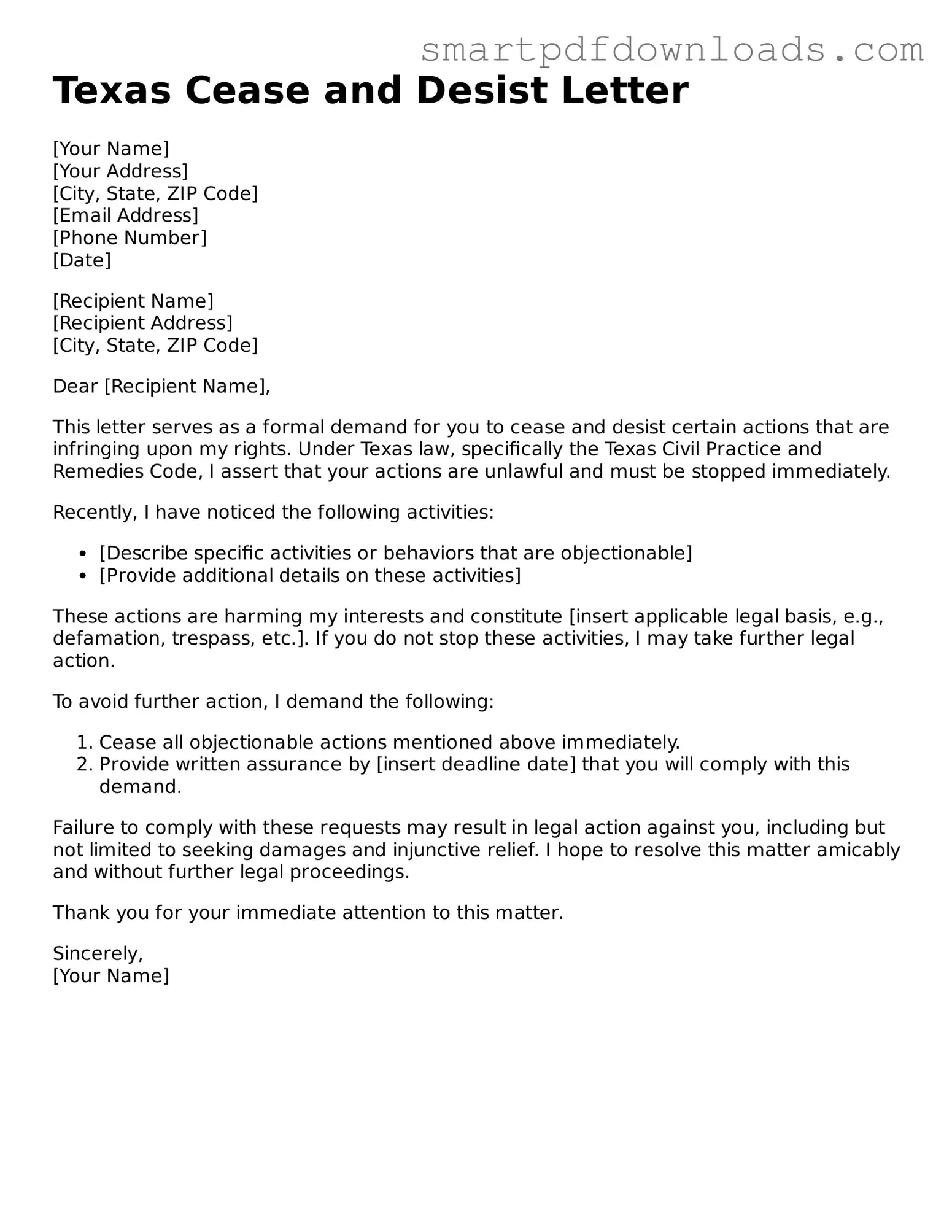Texas Cease and Desist Letter
[Your Name]
[Your Address]
[City, State, ZIP Code]
[Email Address]
[Phone Number]
[Date]
[Recipient Name]
[Recipient Address]
[City, State, ZIP Code]
Dear [Recipient Name],
This letter serves as a formal demand for you to cease and desist certain actions that are infringing upon my rights. Under Texas law, specifically the Texas Civil Practice and Remedies Code, I assert that your actions are unlawful and must be stopped immediately.
Recently, I have noticed the following activities:
- [Describe specific activities or behaviors that are objectionable]
- [Provide additional details on these activities]
These actions are harming my interests and constitute [insert applicable legal basis, e.g., defamation, trespass, etc.]. If you do not stop these activities, I may take further legal action.
To avoid further action, I demand the following:
- Cease all objectionable actions mentioned above immediately.
- Provide written assurance by [insert deadline date] that you will comply with this demand.
Failure to comply with these requests may result in legal action against you, including but not limited to seeking damages and injunctive relief. I hope to resolve this matter amicably and without further legal proceedings.
Thank you for your immediate attention to this matter.
Sincerely,
[Your Name]
